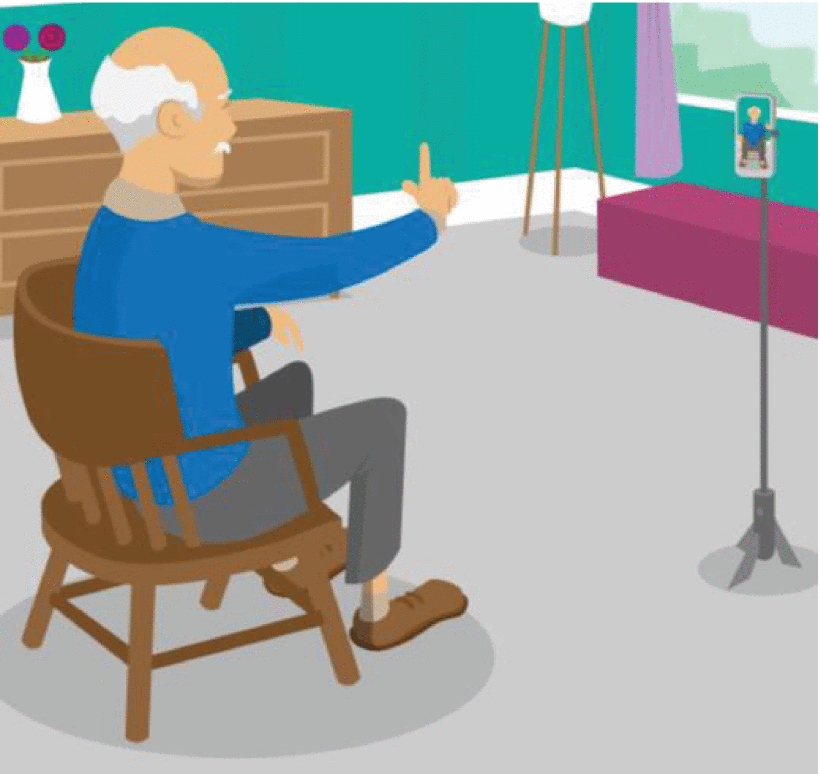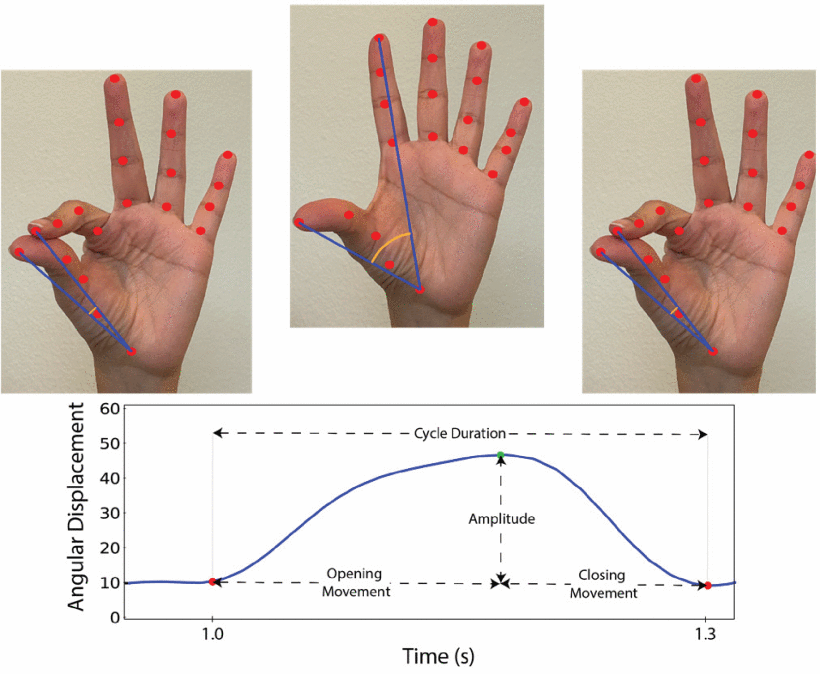To date, there remains a lack of curative treatments for PD. As a result, the management of PD is largely supportive and directed towards the relief of tremors, mood disturbance bradykinesia, and postural instability.
Physicians often use the Movement Disorder Society Unified PD Rating Scale (MDS-UPDRS) to measure disease progression as mild, moderate, or late PD and evaluate how patients respond to treatment. Although the MDS-UPDRS Part III scoring method is a reliable and sensitive approach, it is associated with limitations in its characterization of motor symptoms. Furthermore, MDS-UPDRS III relies on subjective interpretation and has limited sensitivity in detecting the prodromal or early stages of PD.
Thus, a better PD assessment system that is sensitive to small changes in motor function is needed. This approach would enable the detection of varied stages of PD and formulate effective treatment strategies to delay its progression.
Recently, researchers investigated the potential of a new digital approach that uses ML algorithms to determine movement markers of PD from MDS-UPDRS III video recordings. For example, the finger-tapping test of the MDS-UPDRS III, which is used to assess limb bradykinesia, could be exploited in the digital approach. In one study, assessing motor symptom severity in finger-tapping test videos through ML algorithms resulted in higher accuracy in PD diagnosis and severity predictions.
Currently, available digital approaches to detect PD assume that a common set of kinematic features exists across disease severity, which consistently fluctuates based on the severity. However, this assumption might not be valid, as motor symptoms do not change uniformly as PD progresses.
About the study
The current study's researchers hypothesized that considering different kinematic features could more reliably detect PD and predict motor symptom severity more accurately at different stages of the disease.
To this end, video data from 66 individuals with PD and 24 age-matched healthy controls were used. All PD diagnoses were confirmed by a movement disorders specialist using the United Kingdom PD Brain Bank diagnostic criteria. Any participants with a history of brain tumor, stroke, or an implanted device were excluded.
Data were collected from eligible participants at baseline and one year later. MDS-UPDRS III assessments, which included both motor and cognitive evaluations, were video recorded.
Before data acquisition, study participants were asked to withdraw from any anti-Parkinsonian medications overnight. ML algorithms were used to evaluate hand poses and identify video-based kinematic features associated with bradykinesia.
A multiclass classification model, ordinal binary classification model, and the newly developed tiered binary classification approach were compared for data analysis. The multiclass classification model uses consistent features for all severity levels, whereas an ordinal binary classification approach considers the ordinal nature of disease severity scores. The novel tiered binary classification approach considers different movement features according to disease severity.

Recording set-up and environment. Subjects sit in front of a standard video camera and perform the Finger Tapping task. The task is recorded, and the video is stored for processing. The task performance is guided by an expert clinician who provides a clinical score.

Hand tracking results provided by our video processing pipeline. We compute the angular distance between two vectors formed by joining the base of the hand with the tip of the index and thumb fingers as localized by Google's MediaPipe in each video frame. The angular distance is tracked through the video to estimate an angular displacement signal. The bradykinesia related kinematic features are then computed from the peaks and valleys (green and red dots) of the angular displacement signal.
Study findings
A total of 180 videos, including 123 videos from PD patients and 44 videos from healthy individuals, were analyzed. Based on motor symptom severity, 42, 20, 62, and 56 videos were scored zero, one, two, and three, respectively.
Each participant provided two finger-tapping test videos, one for each hand. Some patients exhibited increased movement variability and progressive reduction in sequence effect, which is the amplitude during the repetitive tapping movement.
Most of the video-based kinematic features differ significantly between groups; however, when the difference between severity scores was analyzed, the features that differed between groups with the lower scores were not the features that differed between groups with the highest scores. This finding supports the study hypothesis that kinematic features that determine disease severity differ as the disease progresses.
Several non-traditional kinematic features were identified, such as amplitude decay, opening and closing movement speed, and measures related to movement and timing variability that could be quantified from videos. Compared to existing methods, the novel tiered binary classification approach predicted PD severity and distinguished between different severity levels with greater accuracy.
Conclusions
Automatic prediction of severity from videos has the potential to revolutionize PD management. It could promote monitoring and quantifying the severity of motor symptoms through video analysis alone.
The novel tiered binary classification approach utilized in the current study was found to be more efficient in determining PD severity; therefore, this technique could effectively improve PD management and the evaluation of treatment efficacy. Rather than rely on a single multiclass model, it appears to be more efficient to use a multi-stage modeling approach or combination of models considering multiple features at various severity levels.
Journal reference:
- Guarín, L. D., Wong, J. K., McFaurland, N. R., et al. (2024) Characterizing Disease Progression in Parkinson’s Disease from Videos of the Finger Tapping Test. IEEE Transactions on Neural Systems and Rehabilitation Engineering 32; 2293-2301. doi:10.1109/TNSRE.2024.3416446.